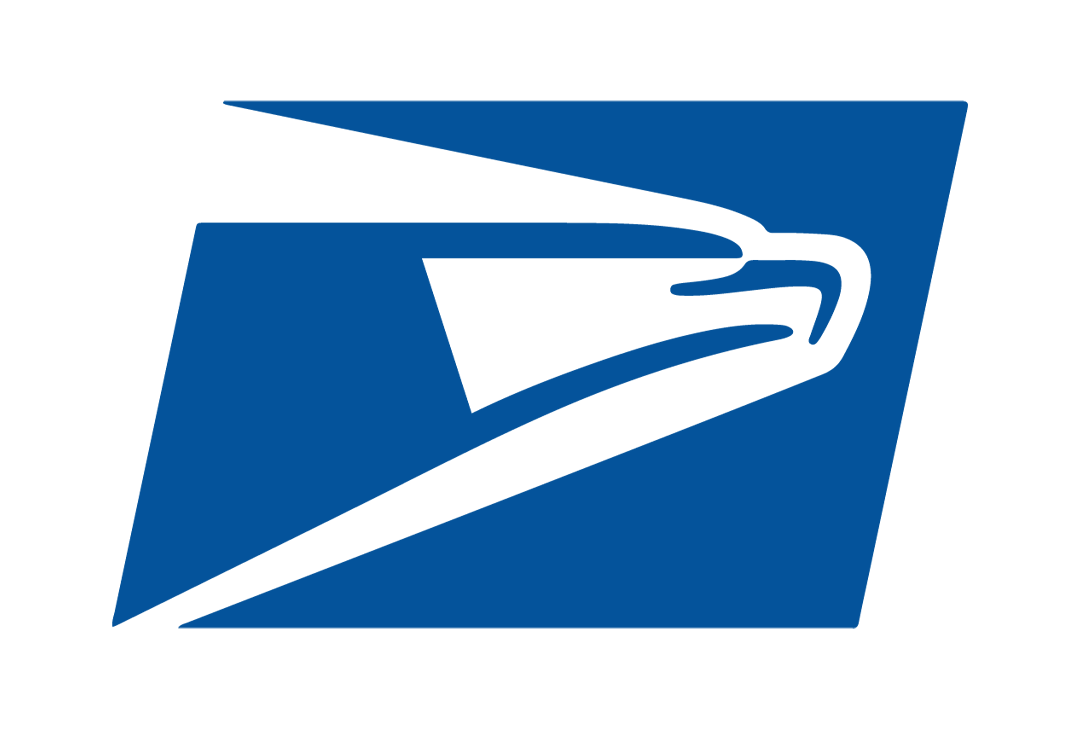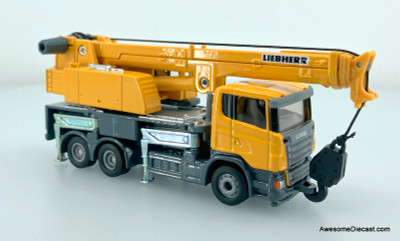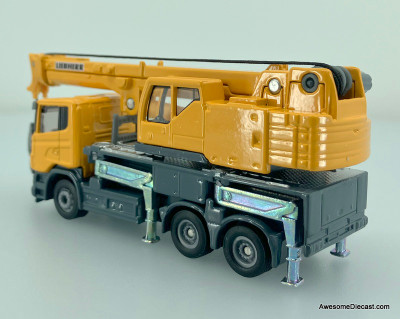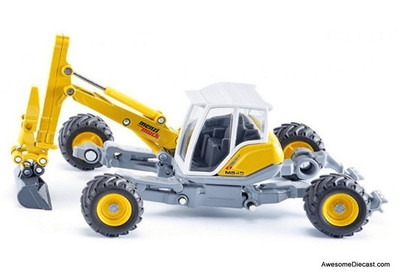Excavators are heavy construction equipment consisting of a boom, dipper (or stick), bucket and cab on a rotating platform known as the "house". The house sits atop an undercarriage with tracks or wheels. They are a natural progression from the steam shovels and often mistakenly called power shovels. All movement and functions of a hydraulic excavator are accomplished through the use of hydraulic fluid, with hydraulic cylinders and hydraulic motors. Due to the linear actuation of hydraulic cylinders, their mode of operation is fundamentally different from cable-operated excavators which use winches and steel ropes to accomplish the movements.
The Liebherr Group is a multinational equipment manufacturer based in Switzerland with its main production facilities and origins in Germany.
It consists of over 130 companies organized into eleven Divisions: Earthmoving, Mining, Mobile cranes, Tower cranes, Concrete technology, Maritime cranes, Aerospace and transportation systems, Machine tools and automation systems, Domestic appliances, and Components. It has a worldwide workforce of over 42,000, with 9 billion euros in revenue for 2017. By 2007, it was the world's largest crane company. Established in 1949 by Hans Liebherr in Kirchdorf an der Iller, Baden-Württemberg, Germany, the business is still entirely owned by the Liebherr family. Isolde (daughter of Hans) and Willi (son of Hans) Liebherr are the chief executive and chairman of the Bulle, Switzerland-based Liebherr-International AG, and several other family members are actively involved in corporate management.
In 2005, Forbes magazine listed them as billionaires. In 1974, the Franklin Institute awarded Hans Liebherr the Frank P. Brown Medal.
Starting by building affordable tower cranes, Liebherr expanded into making aircraft parts – it is a significant supplier to European Airbus airplane manufacturer – and commercial chiller displays and freezers, as well as domestic refrigerators. The group also produces some of the world's biggest mining and digging machinery, including loaders, excavators and extreme-size dump trucks. The T 282 B is the world's 2nd biggest truck (after BelAZ 75710). The group's nine-axle mobile crane, the LTM 11200-9.1 – with a 100 metres (328 ft) telescopic boom – in 2007 received the heavy-lifting industry's Development of the Year award for being the world's most powerful example of such a machine.
Over the years, the family business has grown into a group of varied companies and has locations in many countries, including Germany, Australia, Britain, Ireland, Turkey and the United States. Since 1958, its Irish factory in Killarney, Co. Kerry has built container cranes, exporting them worldwide through the port of Fenit. In Australia, the group in 2013 commenced an AU$65 million expansion of their local headquarters in Adelaide. The development includes adding a new three-storey office, workshops, warehouse, component plant, and distribution centre to the Para Hills facility. In the U.S., the group in 2012 started spending US$45.4 million (about €34.1 million) on a three-year renovation and expansion of its Newport News, Virginia factory, offices and warehouse. The company sought to increase its production there beyond 100 mining trucks a year. On 19 February 2013, representatives from the Commonwealth of Virginia and the cities of Newport News and Hampton announced that they would make grants and incentives available for transport improvement, training, and property investment. In addition, the Liebherr Group owns six hotels in Ireland, Austria and Germany.
In April 2014, Liebherr announced they would invest 160 million euros at its production site in Bulle, Switzerland.



























